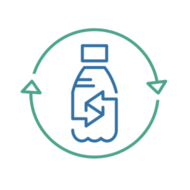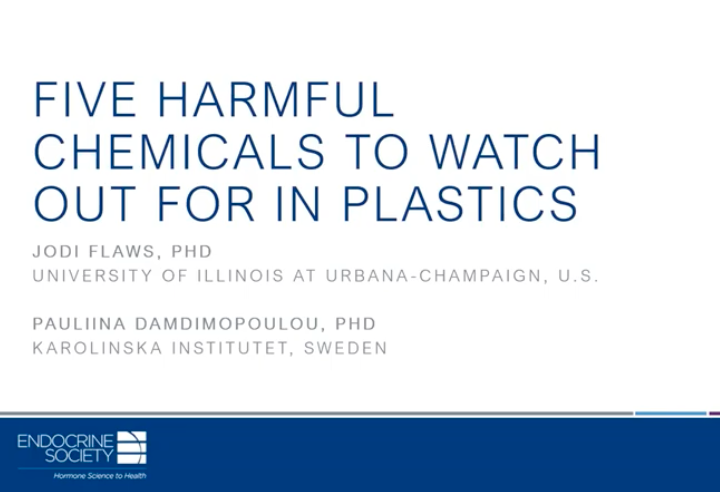This is a summary and explanation of the following research paper: Microplastics in the Food Chain Key Takeaways: Research Paper Summary The research paper “Microplastics in the Food Chain” focuses on several key points regarding the impact of microplastics on the environment and human health: Widespread Contamination of Microplastics The paper highlights that microplastics are …
Category Archives: Chemicals in Plastic
Chemicals in Plastic Packaging & Their Hazards
This is a summary and explanation of the following research paper: Overview of known plastic packaging-associated chemicals and their hazards Key Takeaways: About This Study The authors of this study compiled a database called the CPPdb, which includes 4,283 substances that are likely or possibly associated with plastic packaging. These substances encompass raw materials and …
Continue reading “Chemicals in Plastic Packaging & Their Hazards”
The Alarming Reality of Microplastics in Bottled Beverages
The problem with microplastics in drinking water is way worse than we thought. A new study brings to light an accurate measurement of microplastics in bottled water and beverages. The Study’s Findings The research, utilizing advanced spectroscopy techniques, revealed that bottled water contains approximately 10,000 tiny plastic particles per liter. These particles stem from PET …
Continue reading “The Alarming Reality of Microplastics in Bottled Beverages”
Aluminum vs Stainless Steel Water Bottles
What’s the difference between stainless steel and aluminum water bottles? Stainless steel bottles are more durable, better at temperature retention, and do not require a lining, but are heavier and more expensive. Aluminum bottles are lighter and often cheaper, but they require a lining for safety and do not insulate as well. Material Composition: Weight: …
Continue reading “Aluminum vs Stainless Steel Water Bottles”
Certifications & Labels for Plastics In Consumer Products
Labels such as “BPA Free” and “Phthalate Free” can be helpful in finding products that are safer than conventional alternatives, but just because a product makes a claim doesn’t guarantee it is accurate. There’s a significant difference between a product that has been tested and certified vs a product that is making a claim on …
Continue reading “Certifications & Labels for Plastics In Consumer Products”
How Plastic Chemicals Come Into Contact with Our Skin
Here are some ways in which plastic chemicals can get onto our skin: It’s important to note that the degree of exposure and potential risk from plastic chemicals on the skin can vary based on factors such as the type of plastic, the specific chemicals involved, the duration of contact, and individual sensitivity. Some plastic …
Continue reading “How Plastic Chemicals Come Into Contact with Our Skin”
How Plastic Chemicals Get Into The Air
Plastic chemicals can get into the air through a process known as “off-gassing” or “volatilization.” Off-gassing refers to the release of volatile organic compounds (VOCs) and other chemicals from plastic materials into the surrounding air. This process can occur in various situations and environments, leading to the dispersion of plastic-related chemicals into the atmosphere. Here …
How Plastics Migrate Into Food
The process of chemicals from plastics moving into our food is known as “migration.” Migration occurs when substances in a plastic material transfer from the plastic into the food or beverage that comes into contact with it. This transfer of chemicals doesn’t happen in all plastics or under all conditions. It is more likely to …
The Harmful Truth About Plastics: A Guide to EDCs in Plastics and Their Health Effects
This is a summary of the Endocrine Society’s report on plastics and their implications for our health. Download and read the full report here: EDC Guide 2020 The Harmful Truth About Plastics: A Guide to EDCs in Plastics and Their Health Effects Plastics are all around us – in our homes, our cars, our clothes, …
Five Harmful Chemicals To Watch Out For In Plastics (Presentation Summary)
The panel of experts in this presentation summarize what is known about endocrine-disrupting chemicals (EDCs) found in plastics that threaten human health. What Are EDCs? Endocrine-disrupting chemicals (EDCs) are substances that interfere with the normal functioning of the endocrine system in humans and animals. The endocrine system is a complex network of glands that produce …
Continue reading “Five Harmful Chemicals To Watch Out For In Plastics (Presentation Summary)”

